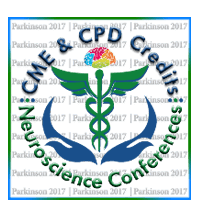
Tesla Yudhistira
Korea Advanced Institute of Science and Technology, Korea
Title: Synthetic steps towards reversible chalcogen-based sensing of essential neurodegenerative disease factors
Biography
Biography: Tesla Yudhistira
Abstract
The chemical etiology of Parkinson’s disease, among other neurodegenerative diseases, is multifactorial and relates to proteins, biomolecules, as well as small soluble analytes including metal ions and ROS. The over-abundance of ROS/RNS could be an indication of Alzheimer’s and Parkinson’s disease (PD). Recent articles by us and other researchers have begun connecting the dots of this small molecule chemistry. There is incredible interest in preparing next-generation (e.g. ROS) probes that are reversible, sensitive, and also robust. Concentrations and the innate chemistry of selenium connect to proposed/tentative etiology of Parkinson’s disease. For all of these reasons and more, we feel that the pursuit of studying organo-selenium chemistry in the context of PD will be fruitful in years to come. In this oral presentation and discussion, selenium, a key element in the redox chemistry of life and for its ability to engage in catalysis, is presented and debated in terms of diagnosis (probing) as well as potentially in therapy. To-date, the role of fluorescence and fluorescent molecules in diagnosis, treatment, as well as in biomedical research, has great current medicinal significance; this is the focus of concentrated effort across the scientific research spectrum. In particular, organo-selenium and/or organo-sulfur molecules show great promise in the detection of reactive oxygen/nitrogen species (ROS/RNS)-key factors in ageing/neurodegenerative disease in living systems. The boron dipyrromethene (BODIPY) system is a versatile class of fluorescent dye; it is commonly used in labeling, chemosensing, light-harvesting, and solar cell applications due to the many compelling characteristics, including an intense absorption profile, a sharp fluorescence emission spectrum, and high fluorescence quantum yield. As part of our ongoing effort to study chalcogenide systems, dithiomaleimide- and phenyl selenide probes (among many others) have been designed, synthesized and characterized. Commonly, fluorescence is quenched by photoinduced electron transfer (PeT) mechanism. These probes show a turn-on fluorescence response upon reaction with ONOO- (BDP-NGM) and HOCl (Mes-BOD-SePh) with significant increase in emission intensity with fast response to ROS/RNS. Live cell imaging showed that the current probes can be used for the selective detection of ROS and RNS in living systems. Time- permitting, we also like to briefly showcase other recent related fluorescent probes and studies.

